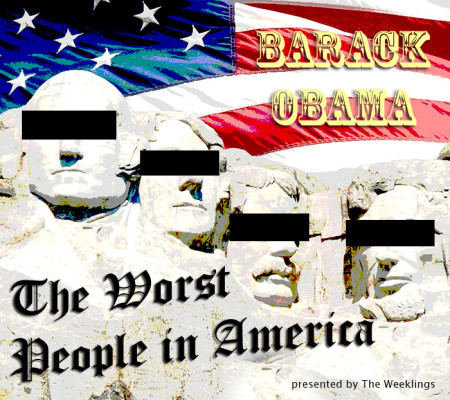IN APRIL AN apology: “I profoundly regret …” “I realize that there are no words …” “As a husband and as a father, I cannot …” “On behalf of the United States government, I offer …” “As president and as commander-in-chief, I take full …” And lastly: “It is a cruel and bitter truth that in the fog of war generally and our fight against terrorists specifically, mistakes, sometimes deadly mistakes, can occur.” [1]
Mistakes.
Three years earlier almost to the day there was this: “It’s this surgical precision, the ability, with laser-like focus, to eliminate the cancerous tumor … while limiting damage to the tissue around it, that makes this counterterrorism tool so essential.”[2] This statement not from Obama but John O. Brennan, now head of the CIA, and at the time the president’s closest advisor on drones. Because what we’re talking about here are drones, a drone that accidentally killed two hostages in January despite surveillance, drones that let us kill without ever really knowing who we’re targeting.
It’s not that mistakes can occur, or even bad language like the poor analogy of cancer. Or, the clichés like “the fog of war” (though the drone Obama referred to was deployed over a country where we are not officially “at war,” a phrase that also these days deserves to be in quotes). It’s the “signature strike,” one of the many euphemisms of war our age has coined, but the signature here is not the president’s. It doesn’t come from the head of the CIA or anyone at the Pentagon. The signature is the victim’s own, a death warrant dealt in behavioral patterns and predictive behavioral software (the same things that govern pop-up ads on Facebook, and we all know how wrong those can be – though to say, Warby Parker, I do like your frames, so keep trying).
This signature doesn’t even require knowing the victim’s name—just if his (and it will likely be a “he” though collateral damage can take in plenty of she’s, plenty of women and children) actions seem like a terrorist’s. The government hasn’t specified what activities these might be, though it’s been noted that “three guys doing jumping jacks” are a terrorist training camp,[3] or as Cameron Munter, former ambassador to Pakistan said, former ambassador to Pakistan said, “any man between 20 and 40.” [4] Soon this behavioral profiling starts to look to me like racial profiling – like racism.
A drone—a Reaper or Predator or Global Hawk with wingspans close to a 737 – will circle overhead for hours and hours. Days and days, months and months, watching. The plane has cameras that can see the swoosh on the side of your sneakers, and track your data and the flare of a match or heat signature of overturned earth, still the signature they track is your own. You sign your death warrant. The drone pilot dropping the Hellfire missile won’t necessarily even know the target’s name. The behaviors are broad, but gender, skin color, clothing, or just being in the wrong place at the wrong time can land you on the list. What if someone who called someone calls you? What if you hang up quickly because it’s a wrong number and the censors in the drones assume you’re trying to dodge surveillance? Or what if they don’t realize that the Taliban fighter in your guesthouse is holding you and your family hostage by any number of veiled – or not so veiled – threats? [5]
Pretty soon the difference between Waziristan and Fergusson blurs. I think of a line by Claudia Rankine in her excellent book Citizen. “Because white men can’t police their imagination black men are dying.” Because we’re scared, because we make a tragic leap of the imagination assuming we know, assuming we have the right to know, assuming we are sure….
I think too of Marilynne Robinson talking last year of our country’s culture of fear.
“Fear is so opportunistic,” she says to the reporter from the New York Times Magazine, “that people can call on it under the slightest provocations: ‘He looked at me funny.’
‘So I shot him,’” the reporter adds.
“‘Exactly.’
‘Can you blame me?’
‘Exactly. Fear has, in this moment, a respectability I’ve never seen in my life.’”[6]
Fear, assumption, terror (vs terrorism) rule. We stand our ground wherever that might be and we feel entitled to kill – or at least apologize and get away with it. “I profoundly regret… I realize there are no words (yet more and more words are offered)… As a husband and a father…. As president and commander-in-chief….”
What court has convicted these men? The court of fear? The court of suggestion? The trial by cell phone data? Or, neighborhood, or having the bad luck to be living in a war zone – be it West Baltimore or Western Pakistan? What’s the difference between shooting a twelve-year old for playing with a toy gun and someone who looks to be a terrorist, but you don’t really know?
In news reports of drone strikes, missives that often run at less than 100 words, those killed are called “insurgents” or “militants.” The victims are never identified and are rarely given the benefit of even being labeled “suspected militant” or “suspected insurgent.” We simply damn them with the language we use. It’s also impossible for journalists to investigate the strikes independently.
“Signature strikes” have replaced “terrorist Tuesday” (events the press also rarely discussed, but that I picture as including bro high-fives, coffee and donuts in the Situation Room.) At those morning meetings White House and security officials would identify high-level targets for drones to track and kill. Now that there are so few such targets left, we go for the “signature strike,” for those men under forty doing jumping jacks. Part of why the program has grown is also that there are more low-level terrorists now. Designed to be a “surgical” strike to get rid of a “cancer,” the drones have actually led to said “cancer” spreading. Drones create more terrorists – because people feel helpless in the face of being watched from on high, targeted from thousands of miles away, from being a target regardless of what you did or did not do, and from having no recourse to complain or get justice. It can sound a bit like being black in America. A bit like being black in America and being so frustrated that all you have left to do is riot and dream of revolution.
So we stand our ground, we openly carry, we conceal and carry; we have drones.
And, we have Obama. The drone policy is his and his alone. He said so himself, “I take all responsibility.” For us to kill someone from two miles or more in the air, in a nation where we’re not at war (which is an extrajudicial killing and a violation of international law), the policy has to be approved by the president, even if not every strike (or signature) is. The directive is not approved by the House or Senate or any legislative body. It hasn’t even been before by the Supreme Court. The policy comes from his desk. Someone else dreamed it up, no doubt. He inherited it from the Bush administration, but at the tail end of two terms, it’s his, fully. Yet, more than most he understands racial profiling and police racism – that sense of being hounded, of never getting a break, of always being a suspect, that knowledge that people’s instinctual fear of you as a black man makes you a target.
He said Trayvon Martin could be his “son.” “Another way of saying that,” he continued, “Trayvon Martin could have been me 35 years ago.”[7] He has called out the injustices of policing, saying “all lives must be valued.”[8] And yet where is the valuing with drones? Whose lives are valued? Which ones matter?
Drones offer an efficiency of death that undervalues certain lives in certain places, that makes the people who live in those places feel disposable. From a distance we might see someone’s sneakers but we can’t really tell what someone is doing or whom he is attached to, let alone know his name. I see little difference between signature strikes and cops’ and others’ killing black Americans and getting away with it because of what the shooters assumed was happening, because their fear took hold and their imaginations went wild. We’ve built a culture where people in authority are free to kill others at a distance. Whether it’s Ferguson or Waziristan, there’s a similar callousness, a fear of getting close, a fear that makes it easy to shoot based on assumptions. Both types of killing say something about who we are as a country now. Fear rules. We are targeting types of actions and types of people – assumptions vs. facts, fear vs. truth – an expectation of guilt rather than innocence, rather than any specific action or person.
Ultimately what I don’t understand is how a president who could call Trayvon Martin his son, who can lament the way police shoot first, targeting behaviors that scare them when the real threat is the officer’s own power, how can this man approve of drone strikes? There is a cruel calculus of death here, one that allows certain lives in certain communities to matter less. As a nation we practice it, and for his “signature strikes” I nominate Obama to the list of worst Americans. He’s a president I voted for twice and of whom I am largely still proud—except for that signature, the signature strike.

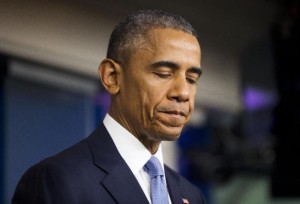
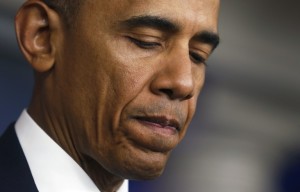
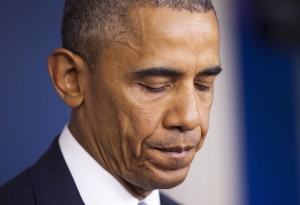
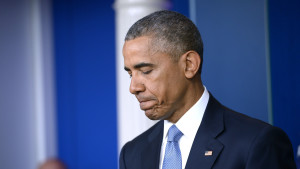
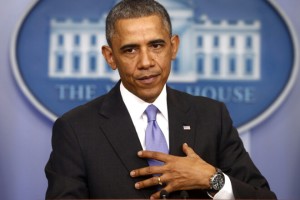
[1] President Barack Obama, “Statement by the President on the Deaths of Warren Weinstein and Giovanni Lo Porto,” The White House Press Office, April 23 2015. https://www.whitehouse.gov/the-press-office/2015/04/23/statement-president-deaths-warren-weinstein-and-giovanni-lo-porto
[2] John O Brennan, “The Ethics and Efficacy of the President’s Counterterrorism Strategy,” Speech to the Wilson Center, April 30 2012, http://www.wilsoncenter.org/event/the-efficacy-and-ethics-us-counterterrorism-strategy
[3] Jo Becker and Scott Shane, “Secret ‘Kill List’ Proves a Test of Obama’s Principles and Will,” The New York Times, May 29, 2012 http://www.nytimes.com/2012/05/29/world/obamas-leadership-in-war-on-al-qaeda.html
[4] Cora Currier, How Does the U.S. Mark Unidentified Men in Pakistan and Yemen as Drone Targets? ProPublica http://www.propublica.org/article/how-does-the-u.s.-mark-unidentified-men-in-pakistan-and-yemen-as-drone-targ
[5] Steve Coll, “The UnblinkingStare: The Drone War in Pakistan,” The New Yorker, November 24, 2014 http://www.newyorker.com/magazine/2014/11/24/unblinking-stare
[6] Wyatt Mason, “The Revelations of Marilynne Robinson,” The New York Times Magazine, Oct 1 2014, http://www.nytimes.com/2014/10/05/magazine/the-revelations-of-marilynne-robinson.html
[7] President Barack Obama, “Remarks by the President on Trayvon Martin,” White House Press Office, July 19, 2103 https://www.whitehouse.gov/the-press-office/2013/07/19/remarks-president-trayvon-martin
[8] “Remarks by President Obama and Prime Minister Abe of Japan in Joint Press Conference,” The White House Press Office, April 28, 2015 https://www.whitehouse.gov/the-press-office/2015/04/28/remarks-president-obama-and-prime-minister-abe-japan-joint-press-confere

